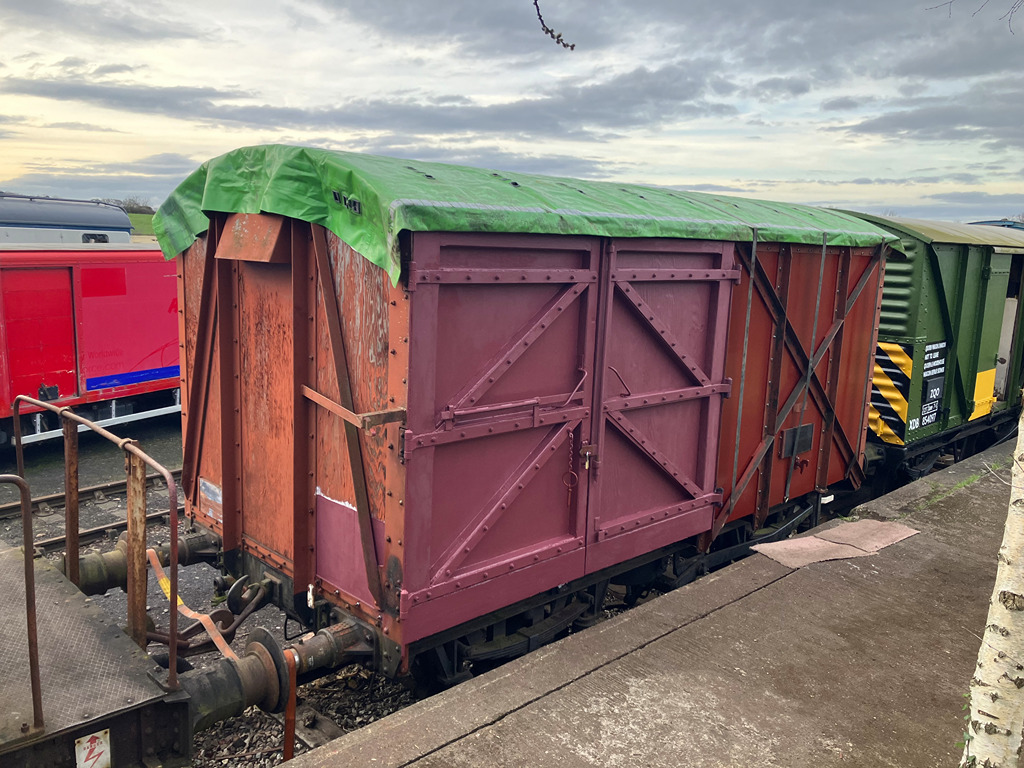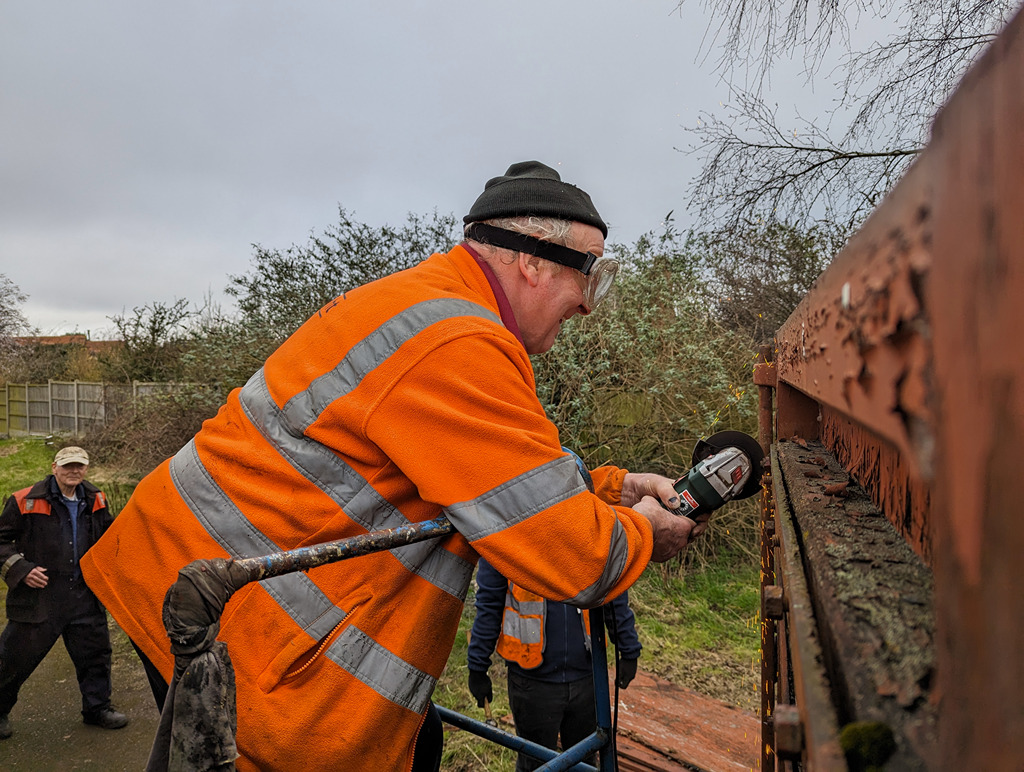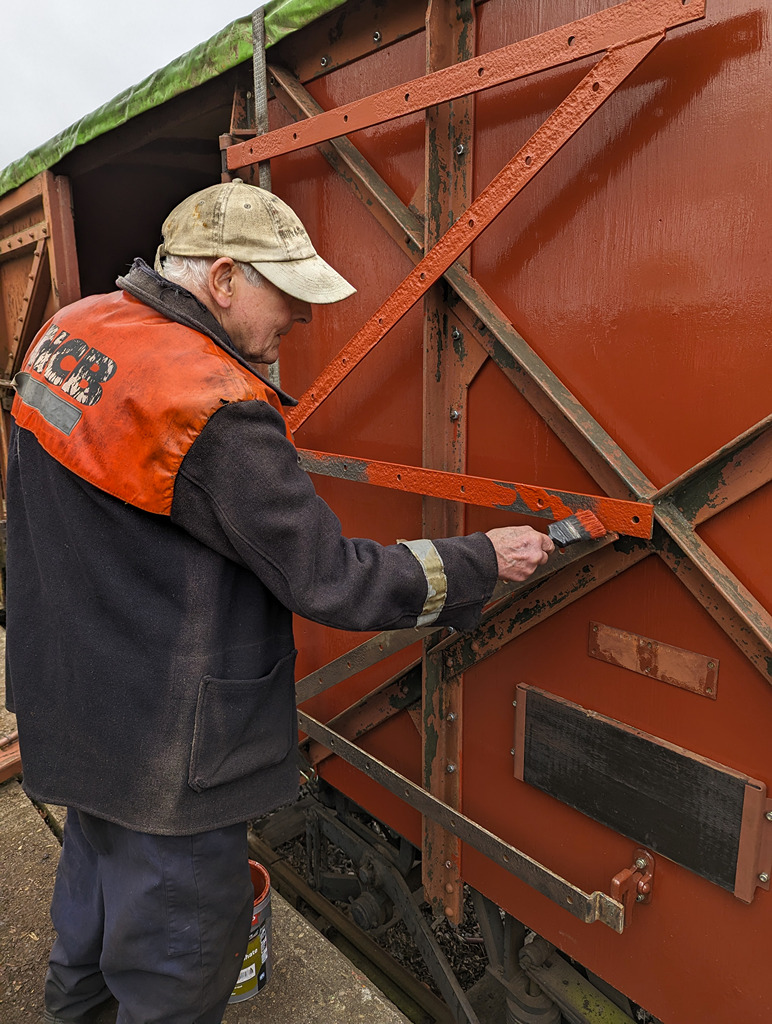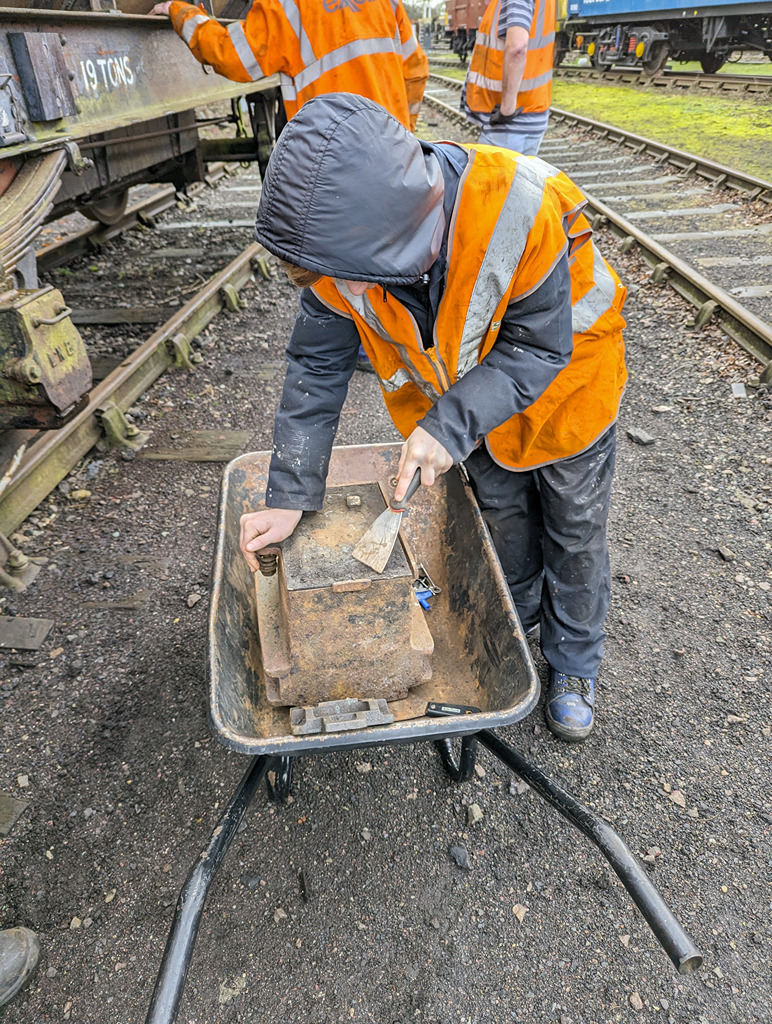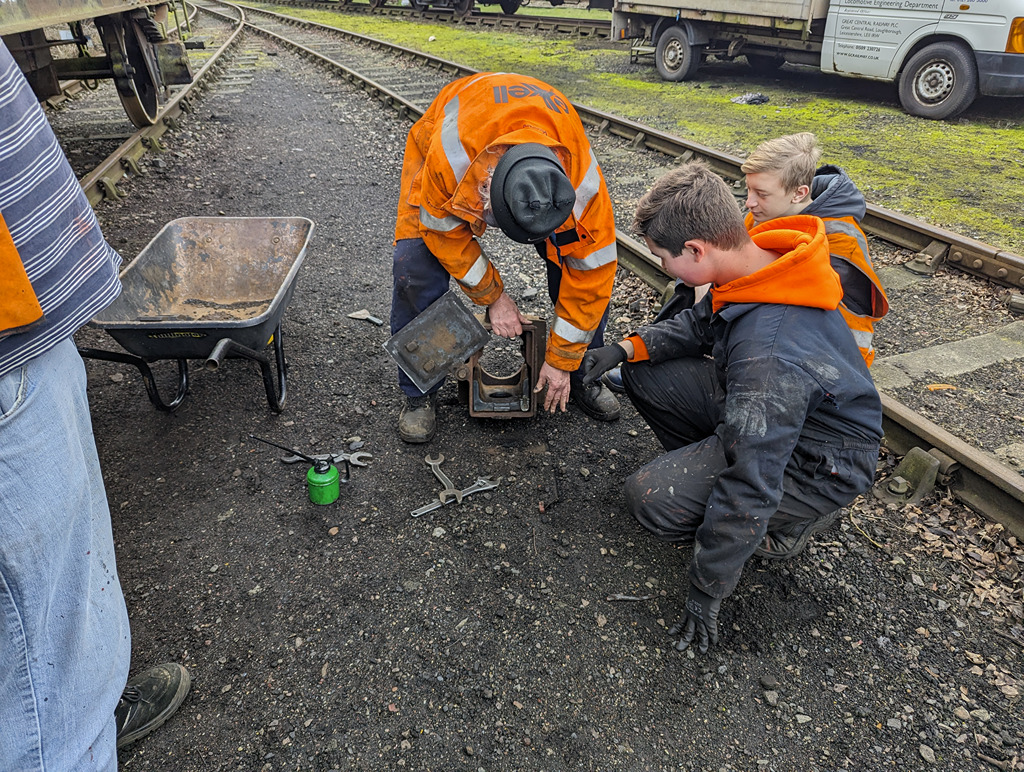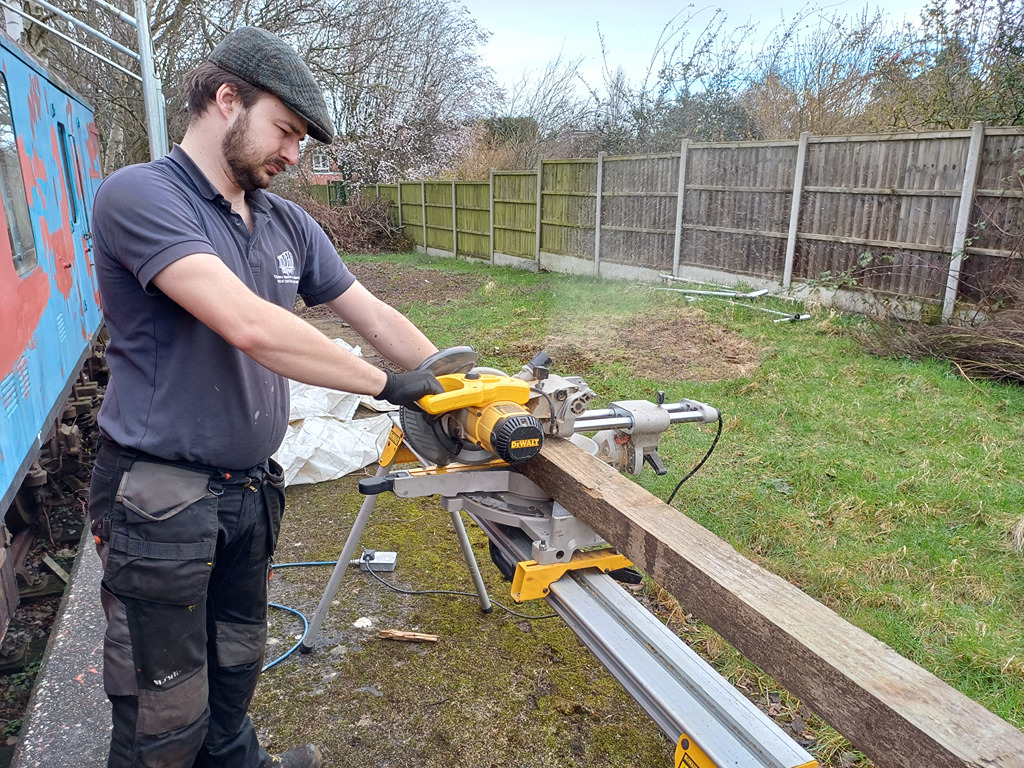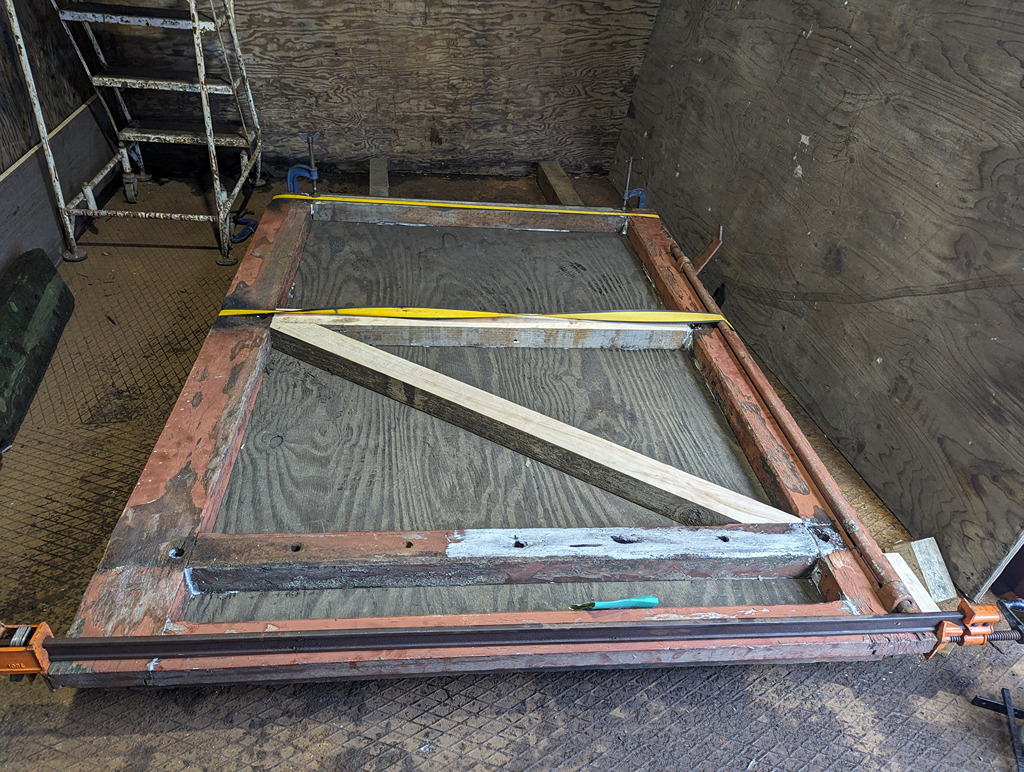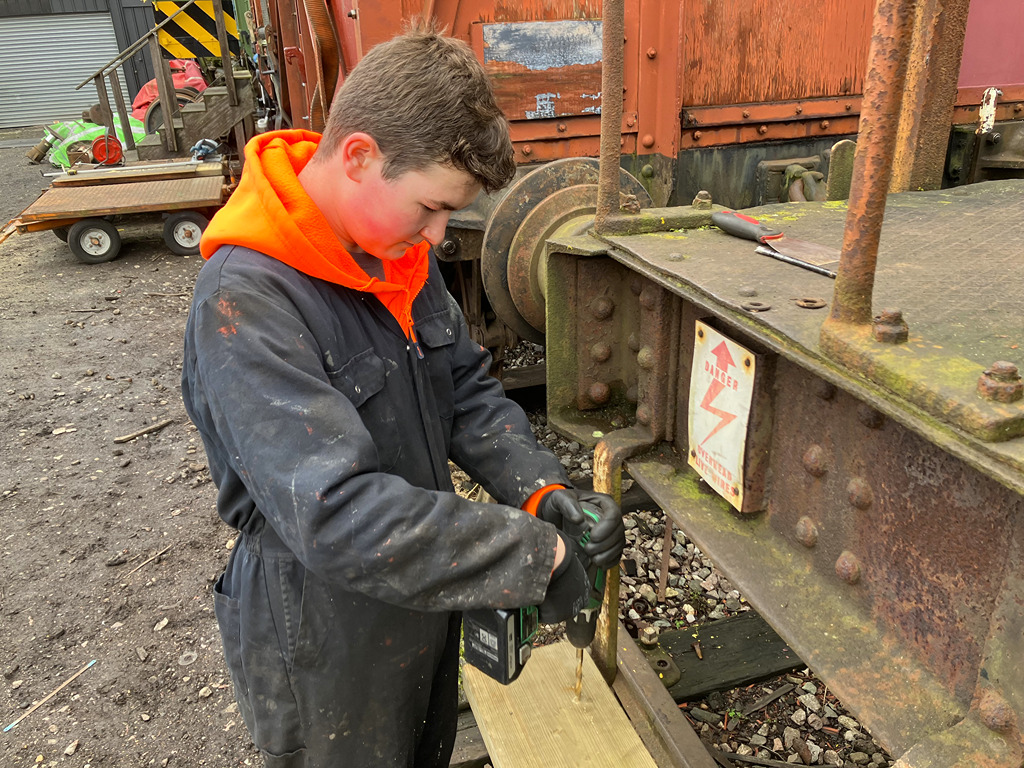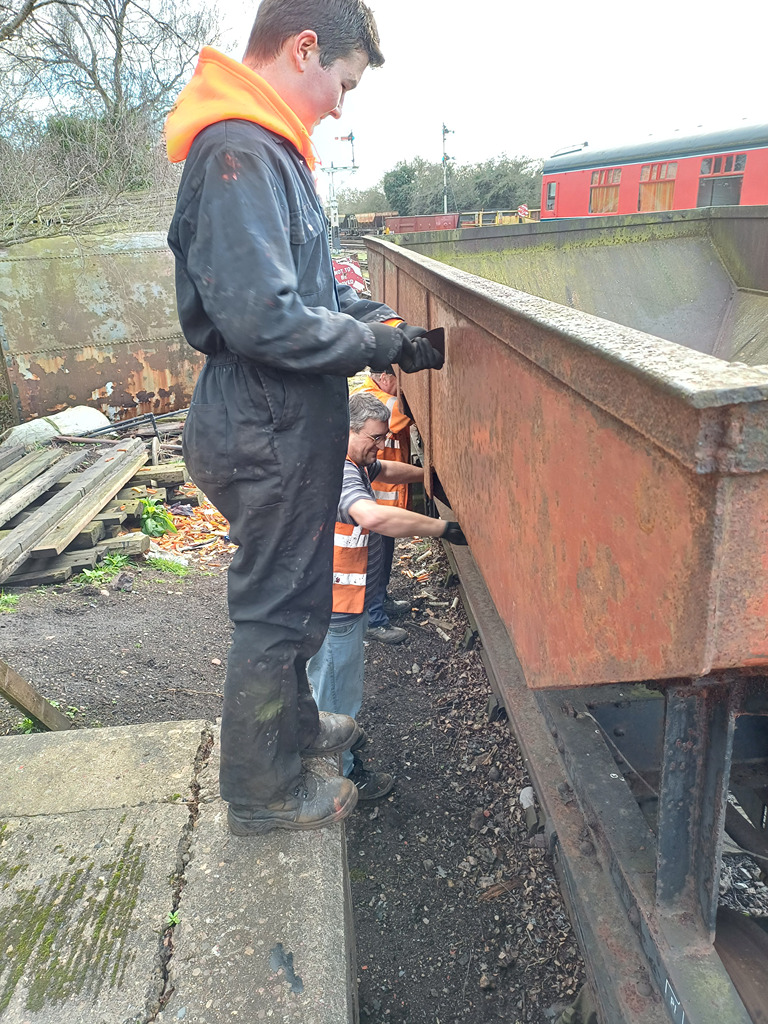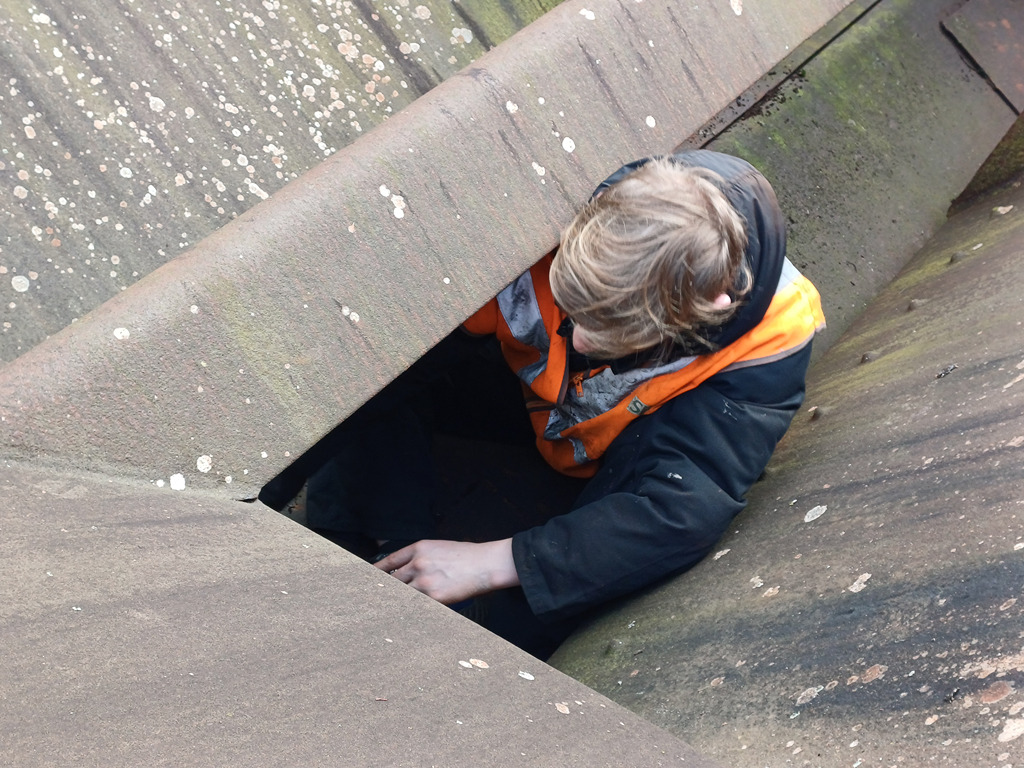Good evening all and thank you for joining us on another update from Quorn. As has been the theme for the past few weeks, we’re focusing on the doors on the Palvan.
We started by removing the clamps from the door that had been assembled by the end of last weekend, which had sat with the copious amounts of glue curing all week. This was then lowered onto a temporary support on the floor and offered into the frame and to the hinges. All looked good, with the old holes lining up again where they were re-used. The front of the wooden frames were primed and the hinge offered back over with sealant applied.

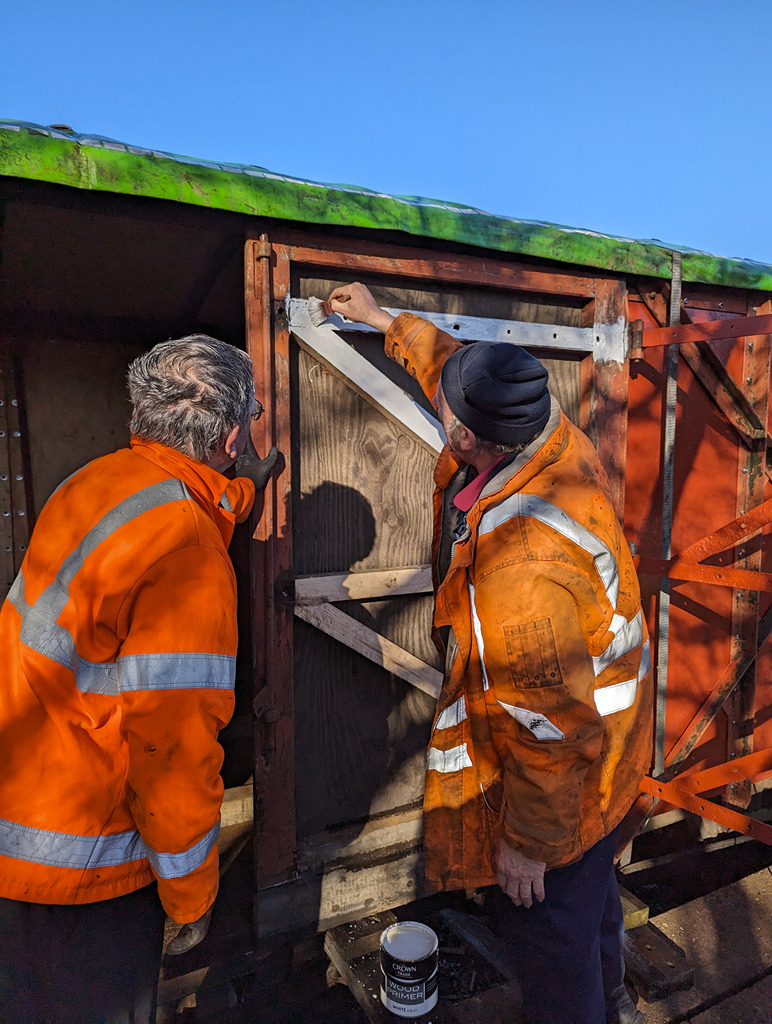
The door was slowly drilled and bolted into place, Ernie then followed and painted the rest of the door into primer while we started on removing and dismantling the other door of the pair.
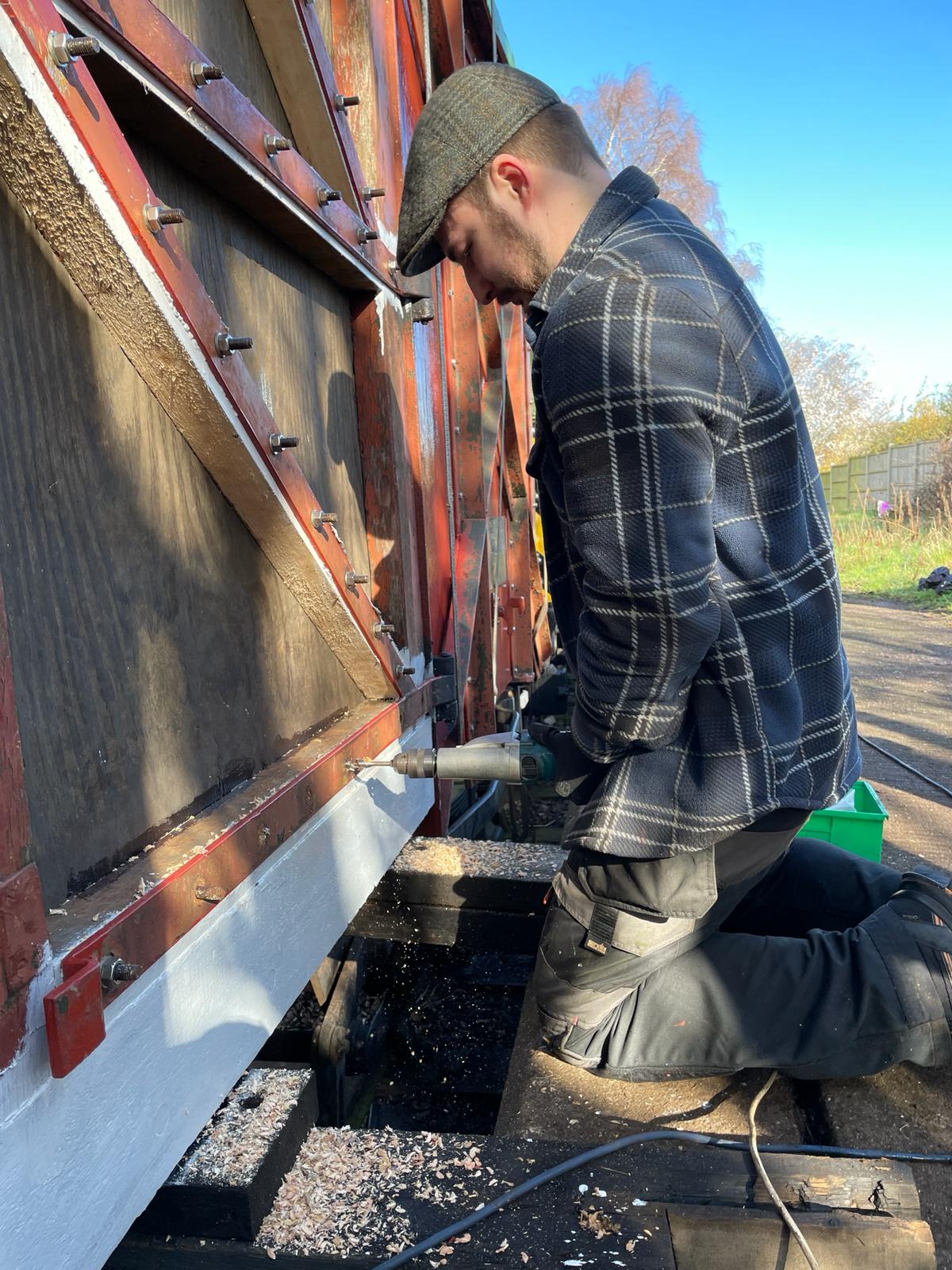







The other door wasn’t in as bad condition, and only 2 pieces needed to be remade, one horizontal member and one diagonal. While Nick cleaned down the hinges and Ernie applied red oxide primer, Barry and I made the horizontal member between us all we got the framework back together.


We opted to cut the ply sheet for the back of the door and then finish the door with the diagonal bracing as this isn’t jointed so could be put in later. We also cut the replacement door bottom, in the same fashion as last week which was glued, clamped and screwed together. The now fitted door had the excess length of the bolts removed.
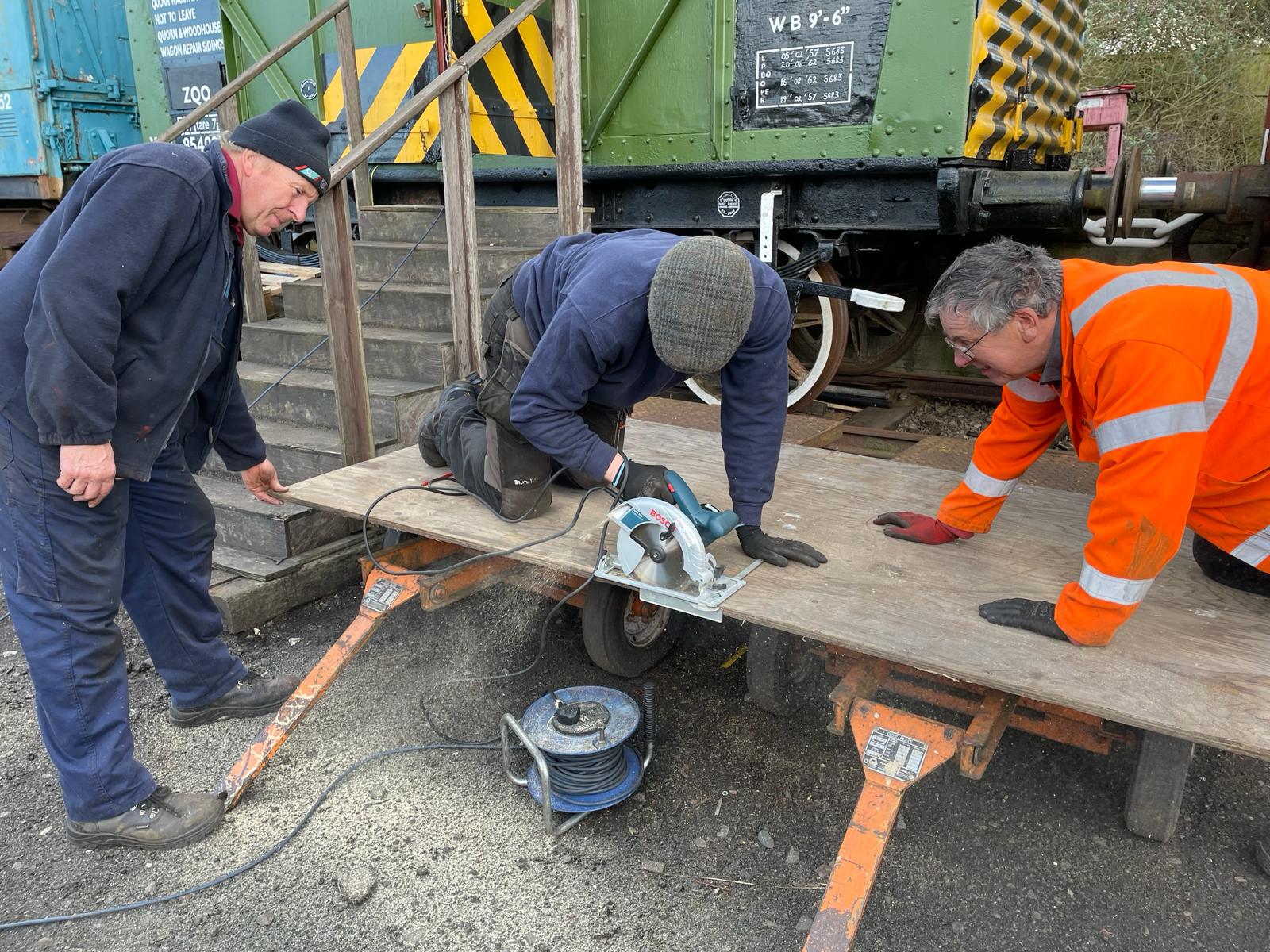




The door was given the rather cold night to cure, until it was again lowered into position. I looked at the diagonal bracing that we removed and thought it wasn’t too far beyond hope, so applied some wet rot wood hardener to it. It may not last long, but it may outlast some of the other wood we’ve had to use; we shall see in time. Oliver helped me apply some glue to the bracing and it was fixed into position.

The same process was followed with this door, framework primed, sealant applied to the hinges, and then drill and bolt. Oliver can be seen greasing the shaft of the bolts prior to fitment,
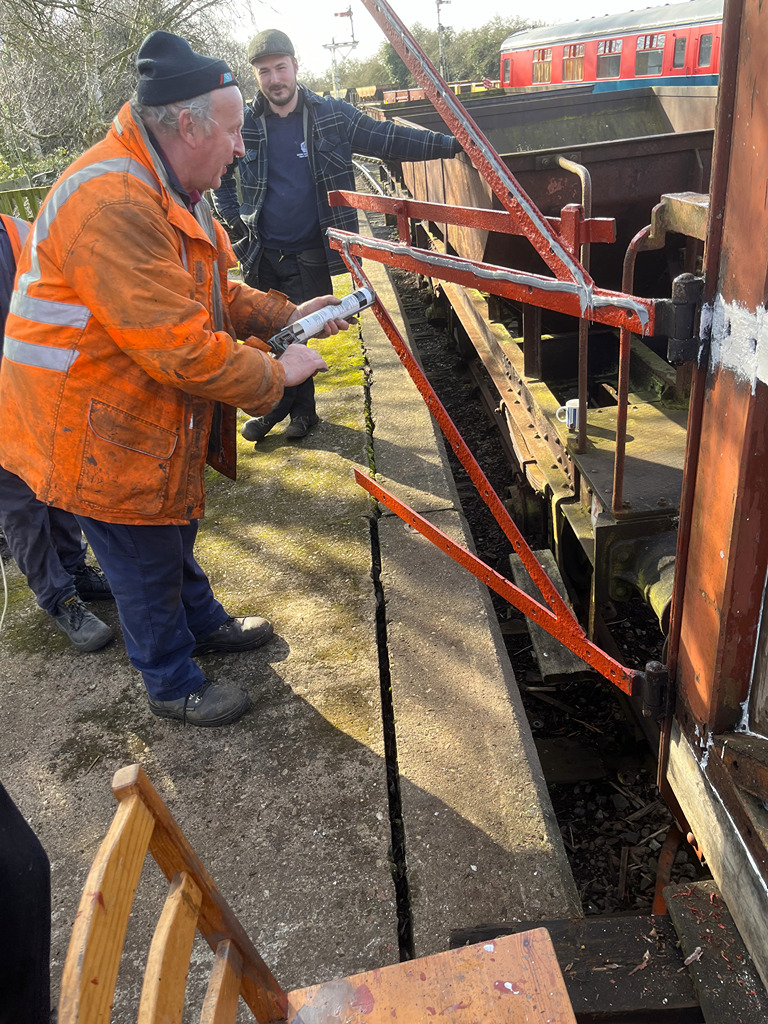



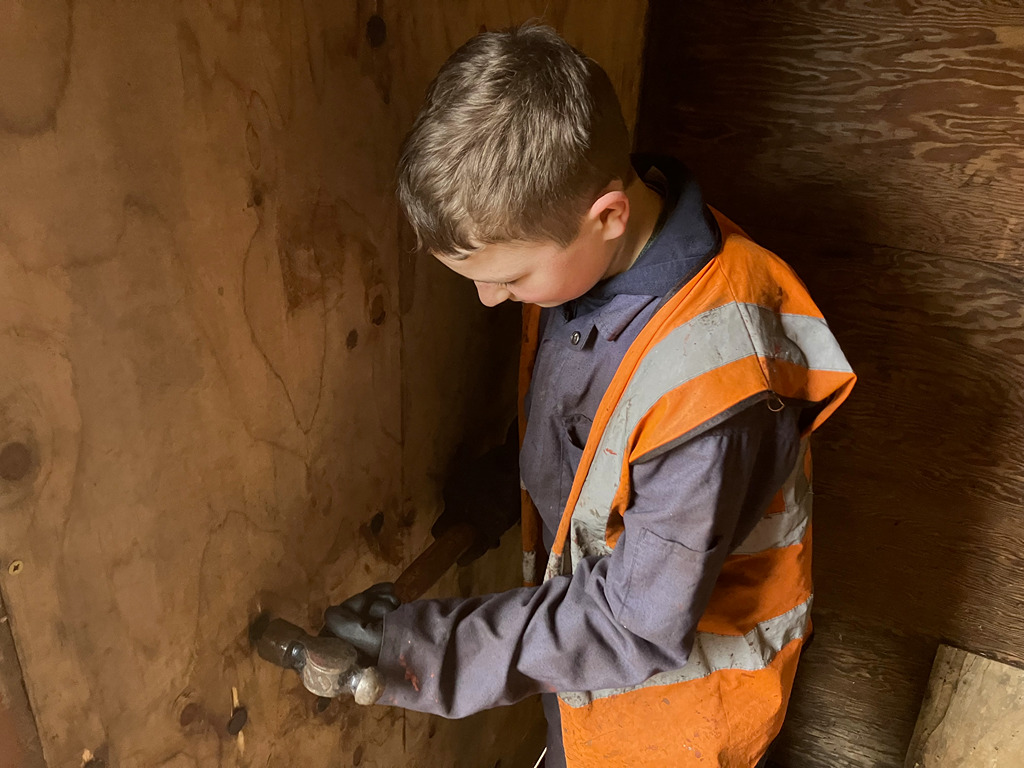

Dan and Tom started priming the door while the lock staple was refitted. Tom and Oliver had to make 3 trips to the nut and bolt van to find the right length bolts! The undercoat then came out, starting with the door fitted yesterday.



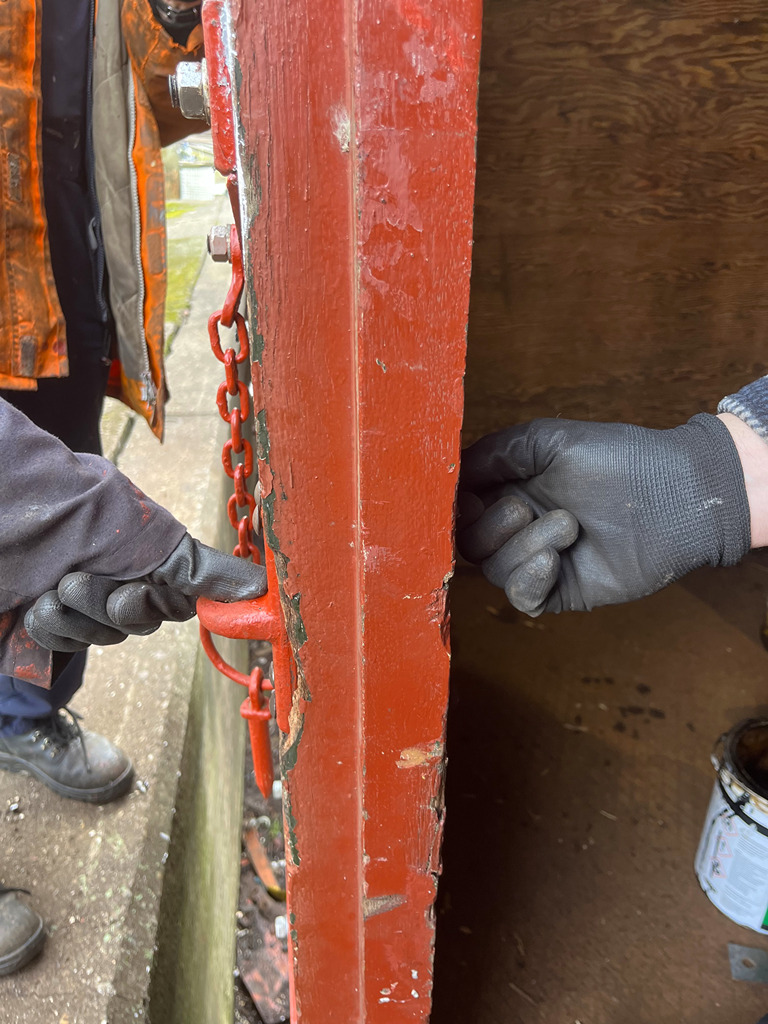




Dan, Tom and Nick continued undercoating, managing to cover both doors.


For now, that is where we will leave these doors until we are ready to gloss them. Our attention now turns to the East side to continue the work there, so hopefully more of the same next week. Thank you for reading!


